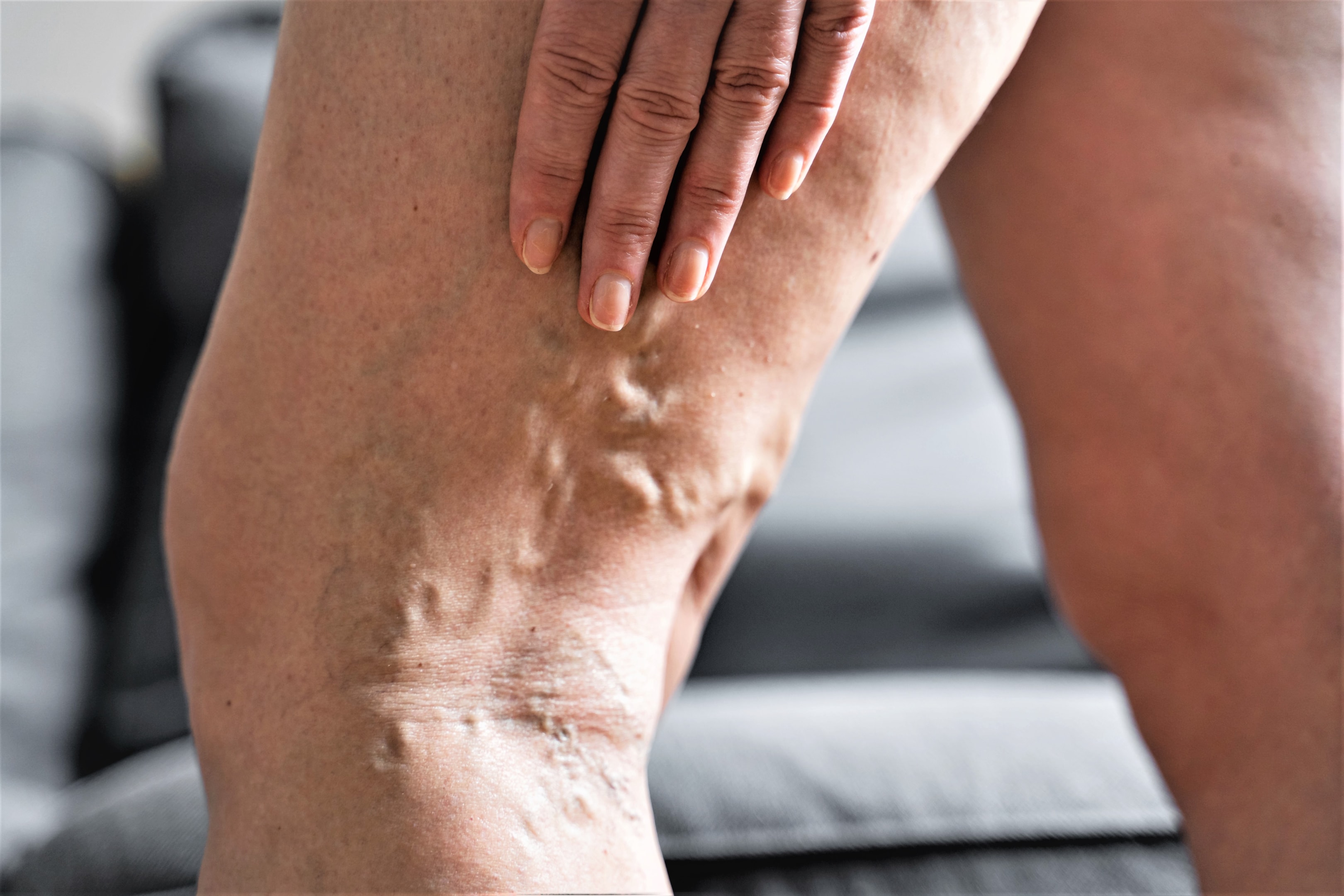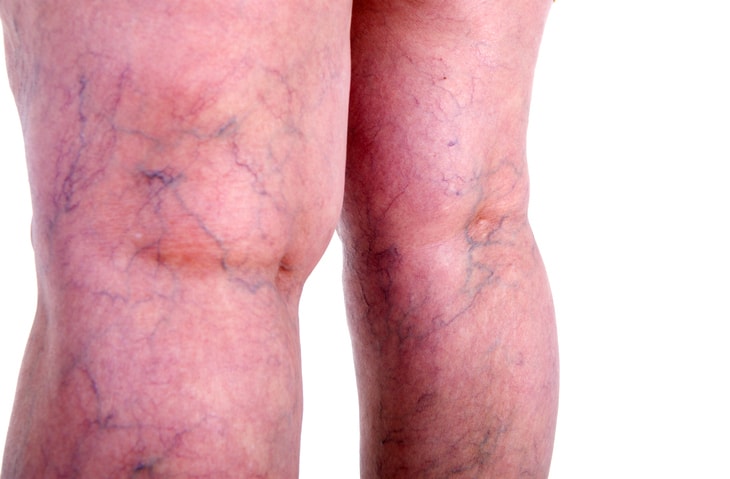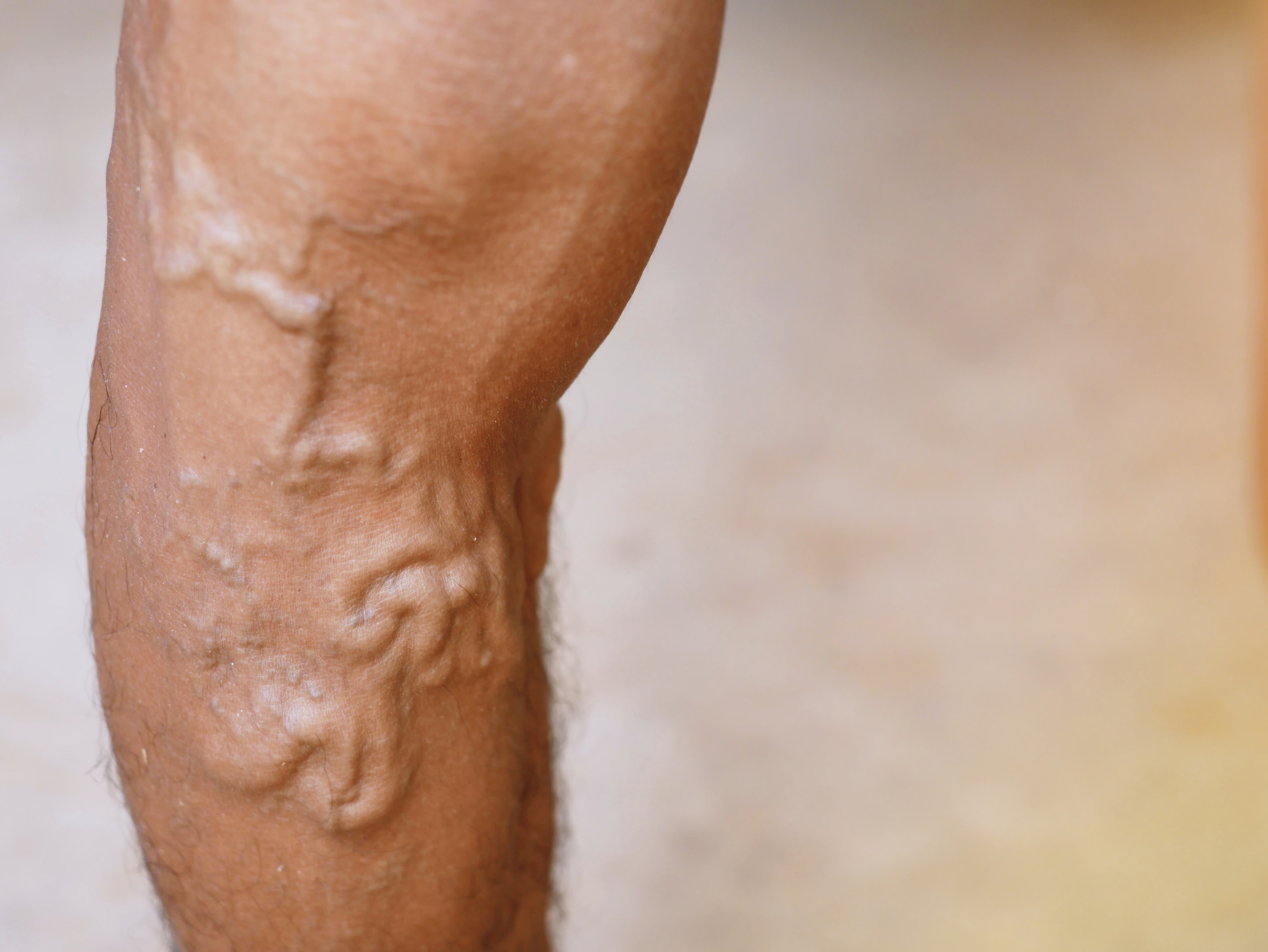What are spider veins and varicose veins?
Varicose Veins and Spider veins are very common. It is important to understand why they occur in relation to normal veins. People can look at their legs and see veins they are new or look abnormal and they often ask: what are spider veins and varicose veins.
Normal Veins:
There are two sets of veins in the legs. The Deep Veins are deeper within the leg, nestled among muscles and bones. They are like hidden highways that carry most of the blood out of your legs and play a crucial role in returning oxygen-depleted blood from the legs back to the heart. When you walk or exercise, the rhythmic contraction of leg muscles helps pump blood through these deep veins, maintaining circulation.
This results because the calf muscles pump the blood back up and the valves prevent the back flow of blood from pooling in the lower legs. Superficial Veins, on the other hand, are the ones closest to the skin’s surface. They also normally have valves that prevent back flow and pooling of blood in the lower legs. They form intricate networks visible just beneath the skin. In normal conditions, these veins are inconspicuous, and you may not notice them unless there’s an issue that results in the development of varicose veins. The saphenous veins are superficial veins.
Varicose veins are larger, twisted veins that can be seen bulging on the surface of the legs.

Both spider veins and varicose veins are superficial veins that arise due to problems with vein valves. Spider veins, delicate and web-like, occur when small superficial valves in the vein wall leak, allowing increased pressure and blood to pool near the skin. They’re usually painless but can be bothersome from an aesthetic standpoint.
Varicose veins, which are the larger and twisted varicose veins close to the skin surface, result from superficial valves malfunctioning, leading to blood pooling that prevent blood from returning to the heart optimally. They can cause discomfort, such as cramping or aching, and are often associated with venous insufficiency and other health issues.
What Causes Varicose and Spider Veins?
Both varicose veins and spider veins are abnormal veins. Generally there is some form of vein valve damage that leads the veins to dilate from increased pressure. Vein valves can be damaged in a number of ways over time, like from injuries that cause scar tissue in the veins. Sometimes its family history, where there are genetic predispositions for vein problems that run in families. In extreme cases, there is a family history of known blood clot conditions.
When there are blood clots in veins the blood clots are inflammatory and they can scar the vein valves causing them to shrink and pressure to build up and dilate the veins into varicose veins and spider veins. Thus spider veins, small varicose veins and large varicose veins veins can suggest the affected veins have an issue with their valve function that results in pooling of blood under pressure that dilates the veins.
What are the symptoms?
In some cases there are no symptoms. In others the patient can experience leg ache when blood pools in the twisted veins or other symptoms such as skin irritation (stasis dermatitis), skin ulcers, known as venous leg ulcers (VLU) or other symptoms from leg veins such as superficial thrombophlebitis or deep vein thrombosis or, in some cases, pulmonary embolism (often resulting in chest pain) from the deep vein thrombosis. These blood clots related to severe varicose veins can be related at times to hormonal birth control pills or a serious medical condition such as cancer.
Remember, whether it’s the hidden highways of deep veins or the visible networks of superficial veins, understanding and taking care of your vascular health can help you strive for healthier legs and a happier you!
What are Spider Veins and Varicose Veins?
- Spider Veins: These delicate, web-like veins appear closer to the skin’s surface. Picture intricate red or blue branches gently tracing across your legs or even your face. They are smaller varicose veins that are embedded in the skin surface. Most spider veins are interconnected with other spider veins like spider webs, so to speak. Spider veins are typically painless and don’t bulge. They’re more common in women and often associated with sun exposure or hormonal shifts. While they’re not usually a sign of serious health issues, they can be bothersome from an aesthetic standpoint. They are sometimes called thread veins or telangectasias. Occasionally they can bleed profusely and require one to consider to treat varicose veins and spider veins to reduce the risk of re bleeding.
- Varicose Veins: Varicose veins are their bolder, more swollen cousins. These veins often bulge, twist, and appear purplish or bluish. But sometimes they can be under the skin and not easily seen. Unlike spider veins, varicose veins tend to be deeper under the skin surface and can cause discomfort. They’re commonly found in the inner thighs, calves, lower pelvic area, and rear.Larger varicose veins and smaller varicose veins can both lead to ache, swelling, and other symptoms.So the size of the vein does not necessarily dictate if they are severe varicose veins as even smaller varicose veins can have significant symptoms and sometimes the larger varicose veins do not have symptoms at all. Thus it is the severity of the symptoms experienced by the patient that defines if they are severe varicose veins or not in term of symptoms and if one should treat varicose veins for medical purposes or not.
What Causes Them?
- Problems with Vein Function and Valves:
- Veins have one-way valves that help blood flow toward the heart. When these valves weaken or become damaged, blood can pool, leading to vein issues.
- Varicose veins result from blood backing up due to weakened valves, while spider veins may emerge from smaller, shallower valves.
- Risk Factors:
- Varicose Veins:
- Family history of varicose veins and blood clots, people who have experienced blood clots and other problems with their blood vessels who are prone to developing blood clots or patients with known history of blood clot conditions. Also people who have impairment of of their calf muscles an develop swollen blood vessels and varicose veins over time. This can be from orthopedic injuries or surgery or back issues and neurologic issues.
- Spider Veins:
- Family history, sun exposure and hormonal shifts play a role, along with minor injuries.
- Varicose Veins:
How to Tell Them Apart?
- Spider Veins:
- Small, faint, and flush with the skin.
- Often found on the face or legs. Spider veins in the legs are often different than on the face, however. In the legs its more of a pressure phenomenon and on the face it is often damage from sun and the impact of hormones.
- Typically painless. However, they can from time to time bleed or become itchy.

- Varicose Veins:
- Varicose veins form generally on the lower legs
- Generally they aer bulging, and larger. (although they can be hard to see)
- Twisting and purplish or blueish.
- Varicose veins affect how your legs feel. They can cause discomfort, like cramping or aching.
- They can develop blood clots known as superficial phlebitis.
- They can contribute significantly to swelling in the lower legs.

Can Spider Veins Turn into Varicose Veins?
- Not necessarily. Smaller valves lead to spider veins, while deeper veins tend to become varicose.
- However, pressure from varicose veins can create spider-like “webs.”
- Often, varicose veins and spider veins go together such that some patients have just spider veins, some patients have just varicose veins, and some have both varicose veins and spider veins at the same time
- But just because someone has spider veins does not mean automatically they will develop varicose veins and just because someone has varicose veins does not mean they will automatically develop spider veins.
- One area of overlap is when someone has long standing varicose veins they can develop a large number of spider veins around their foot and ankle called Corona Phlebectasia.
Treatment Options: There are a number of treatment options to help maintain your healthy veins and improve blood flow by treating your varicose veins and spider veins in both small blood vessels and larger veins.
- Lifestyle Modifications:
- Maintain a Healthy Diet and Healthy Weight:
- A balanced diet rich in fiber and nutrients supports overall vein health.
- Maintaining a healthy weight reduces pressure on your veins.
- Regular Exercise:
- Physical activity helps you get the blood pumping in your veins.
- Walking, swimming, and cycling are excellent choices to help reduce increased pressure in your veins from varicose and spider veins.
- Elevate Your Legs:
- Elevating your legs above heart level reduces swelling and promotes blood flow. However, this is difficult to do for long periods.
- Maintain a Healthy Diet and Healthy Weight:
- Wear Compression Stockings:
- When you are wearing compression stockings you apply gentle pressure to your legs, aiding blood flow.
- They’re particularly helpful for managing symptoms and preventing worsening of varicose veins after being on your feet for long periods.
- This can be helpful to reduce leg swelling, especially after standing for long periods.
- Minimally Invasive Treatments for Varicose Veins are an office based alternative to old vein surgery techniques such as vein stripping. :
- Radiofrequency Ablation (RFA):
- A catheter delivers radiofrequency energy to seal the affected vein.
- Over a few weeks, the sealed vein following the brief radiofrequency energy exposure shrinks the veins and it is reabsorbed.
- This has emerged as a replacement for most forms of older vein surgery such as stripping in many practices.
- Venaseal (Cyanoacrylate Closure):
- A medical adhesive seals the vein, improving blood flow by sealing the veins with a medical grade adhesive
- This too has emerged as an alternative to older vein surgery techniques such as vein stripping.
- Over a few weeks the vein starts to reabsorb and the legs generally feel better as this can help reduce or prevent blood pooling in the varicose veins.
- Varithena (Polidocanol Foam):
- Foam injected into the vein causes it to collapse and close.
- Laser Ablation:
- This is a form of treatment that uses laser therapy to seal the inside of the truncal veins such as the GSV, SSV or ASV.
- Laser energy heats and seals the veins, similar to RFA.
- Radiofrequency Ablation (RFA):
- Spider Vein Treatments:
- Sclerotherapy:
- A doctor injects an FDA-approved medication into the spider veins.
- This causes the veins to shrink, fade, and eventually disappear.
- Surface Laser Therapy:
- Laser energy targets spider veins on the skin’s surface.
- The heat destroys the veins, leading to their gradual disappearance.
- Often, many sessions are needed and the resolution of takes time.
- Sclerotherapy:
- Consultation with a Vein Care Provider:
- Seek an experienced vein specialist.
- They’ll perform an examination and vascular ultrasound studies to map out your vein issues.
- Based on their findings, they’ll recommend a comprehensive treatment plan tailored to your needs.
- Consider if they are doing newer minimally invasive techniques or older vein surgery techniques such as vein stripping.
Are varicose and spider veins treatments covered by insurance?
When it comes to varicose veins and insurance coverage, there are several factors to consider:
Medical Necessity:
Most major insurance companies cover varicose vein treatments if they are deemed medically necessary. Conditions such as chronic venous insufficiency, which can cause symptoms like aching, swelling, tiredness, heaviness, skin itching, stasis dermatitis, blood clots (phlebitis), venous leg ulcers, or bleeding from varicose veins, fall into this category. If you’re experiencing these symptoms, your treatments are likely covered.
Most patients seeking medical care for varicose veins veins that meet medical necessity criteria have ache and leg swelling and they are seeking varicose vein treatment to reduce these symptoms. Some have skin itching or ulcers which are clearly a medical condition. Many of those patients have a history of blood clots, problems with their calf muscles which are needed to pump blood from the legs and prevent varicose veins.
Issues that result in problems with the calf muscles include trauma, arthritis, prior joint fusion, back back, etc. Many have tired compression stockings and modified their risk factors to promote healthy veins with the hope to prevent varicose veins. However, sometimes regardless of wearing compression stockings and being healthy patients still develop varicose veins and spider veins. In the case of spider veins, if they bleed, that generally makes their treatment a medical consideration for insurance coverage.
Cosmetic Concerns:
However, if your main concern is the cosmetic appearance of your leg veins, insurance coverage may not apply. Cosmetic treatments for varicose veins—when patients seek procedures solely for aesthetic reasons—are generally not covered. In such cases, providers may offer self-pay options for the procedures.
Overlap Between Medical and Cosmetic Concerns for Spider Veins and Varicose Vein Issues:
Sometimes there’s an overlap between medical necessity and cosmetic concerns. Providers can help you understand if your specific condition meets the coverage criteria set by your insurance company. It’s essential to discuss your symptoms, goals, and insurance coverage with your healthcare provider to make informed decisions about your care.
Remember, each insurance plan is unique, so it’s crucial to verify coverage details with your specific provider. If you have any doubts, consult with a vein specialist who can guide you through the process and help you explore the best options for your situation. Remember, early intervention and personalized care are essential for managing vein issues effectively. Consult a vein specialist to explore the best treatment path for you!
What to do if you are concerned about varicose veins and spider veins:
Assess Your Symptoms:
Pay attention to any discomfort in your legs, such as aching, heaviness, tightness, fatigue, throbbing, swelling, itching, or burning. Look out for visible varicose veins (enlarged, swollen, twisted veins) or spider veins (small clusters of red, blue, or purple veins near the skin surface).
Risk Factors and Prevention:
Genetics play a significant role. If your parents or grandparents had varicose veins, you may be at risk. Occupations that involve prolonged standing or sitting increase the risk. Women are more likely to develop venous disease than men. Obesity, pregnancy, and aging also contribute.
Consult a Vein Care Specialist:
Reach out to a board-certified vascular surgeon for evaluation and personalized treatment options. Inovia Vein Specialty Centers in Northwest Portland, Tigard, Happy Valley, Tanasbourne, Bend (Oregon), and Vancouver (Washington) offer state-of-the-art vein treatments.
Make an Appointment
Remember, seeking professional advice is crucial if you have questions about your varicose veins and spider veins. If you are in our area, contact Inovia Vein Specialty Centers to discuss your specific situation and find the best solution for your veins.
Our Locations